21.02.2024
Masdar City as an example of a sustainable development city.
Masdar City in the United Arab Emirates (UAE) in Abu Dhabi is not a historically established territorial unit of the state. It is a global project on the scale of a country that aims to be a leader in renewable energy and sustainable development, to create a new autonomous city in the desert based on this concept.

In 1983, the UN World Commission on Environment and Development approved the current understanding of the term "sustainable development". According to Forbes: "Sustainable development is a set of measures aimed at meeting current human needs while preserving the environment and resources, that is, without compromising the ability of future generations to meet their own needs."
In 2015, 17 sustainable development goals were developed at the UN summit. The document with these goals was agreed upon by the leaders of 193 countries.
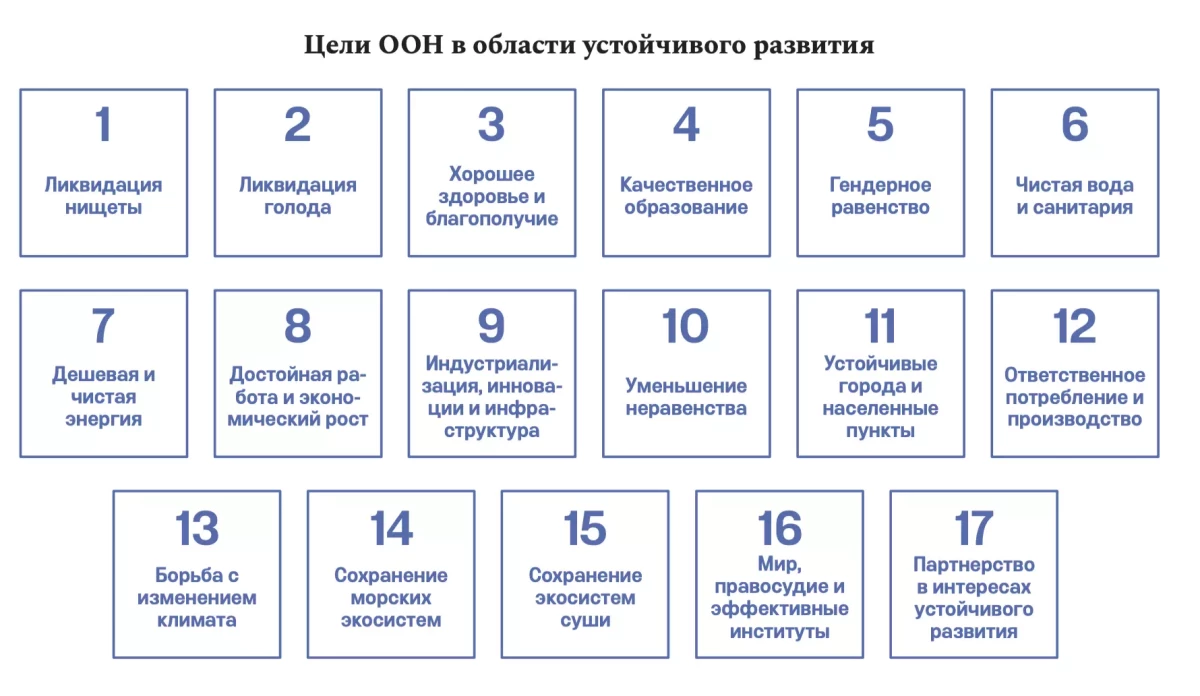
The energy and economic development policies of the participating countries must follow these goals, and this applies to many sectors of the economy. The general idea is that sustainable development is only possible with a balance of three main components - economic growth, social responsibility and ecological balance.
The United Arab Emirates (UAE) has long been “in the know” in this regard.
In 2006, a project for an Arab “city of the future” – a “smart”, energy-efficient autonomous cluster – was launched in the sands of Abu Dhabi.
The concept of the “world’s first” eco-city, covering an area of 6 square kilometers and 17 kilometers from the capital of the UAE, was developed by the British from Fosters + Partners.
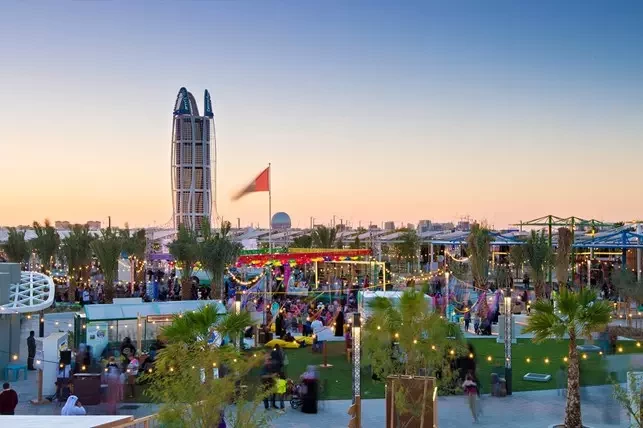
The Emirates have been collaborating with architects from the Norman Foster school for almost two decades now. The first completed project was The Index in Dubai, which was commissioned in 2004.
In their projects for the UAE, Fosters + Partners architects actively promote their concept of architecture for the Arab world, which is designed to take into account the climate and culture of the region.
Masdar City is not so far removed from the emirate’s long-existing communications – there were already long-established water, gas and electricity networks, as well as transport communications nearby.
The main idea behind the project is an urban interpretation of traditional Arabic architecture using advanced materials and technologies to reduce energy consumption. In arid climate conditions, this requires a comprehensive approach.
The project is being implemented by the state-owned Abu Dhabi Future Energy Company, is designed for eight years and consists of several stages. The budget allocated for the construction of the experimental eco-city is $20 million.
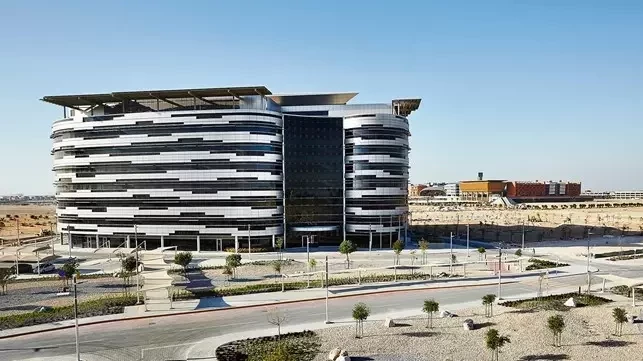
After launching in 2006, the first phase of construction was completed in late 2009. Residential and office space were commissioned, and the campus of Masdar University (Mohamed bin Zayed University of Artificial Intelligence), which is among the top 20 in the world in the field of artificial intelligence, CV, machine learning, NPL and robotics, was built.
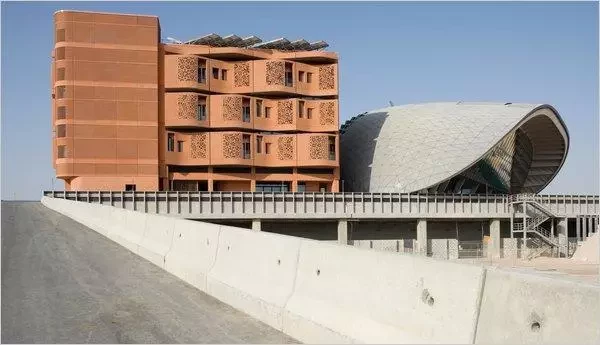
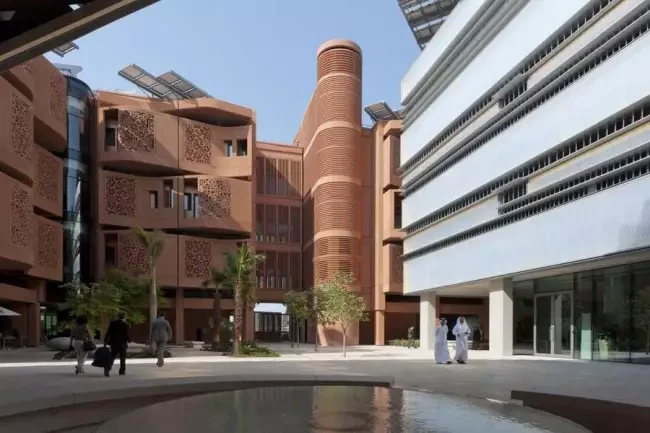
Now it is quite possible to assess the pace of the project’s implementation and what comes out of it.
The plan of the new city is a square – the so-called “Masdar square”. The future population should be between 45 and 50 thousand people. More than 1,500 enterprises and institutions of the city are concentrated here, so approximately 60 thousand more people will come here to work every day.
The city is surrounded by terracotta walls along its perimeter, which insulate the city from the hot winds and sands of the desert.
The project developers have taken an unusual engineering step to provide the city with cool air movements. The city is built at a slight elevation from the ground. In addition, a 46-meter wind tower with a Teflon coating sucks in cool air from above and releases it onto the city streets, maintaining the air temperature at no more than 15–20°C.
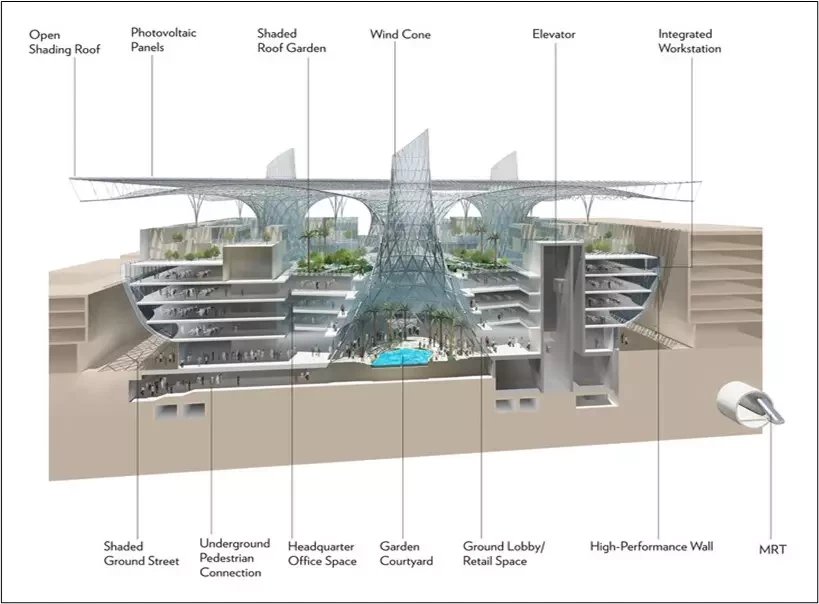


This is the core of the city. Here, in a square building with a 46-metre wind tower, is the headquarters of Siemens in the Middle East.
Combinations with the arrangement of houses, various options for darkening the facades also became tools for saving from the scorching sun.
Enterprises planned in the eco-city should specialize in developments in the field of ultra-modern and environmentally friendly technologies and the production of related products.
The main means of transportation in Masdar was to be a public rapid transit system – PRT (Personal Rapid Transit) electric vehicles – a type of automated urban and suburban transport that operates without a driver and moves along specially designated routes. Personal transport with a zero carbon footprint will also be present.
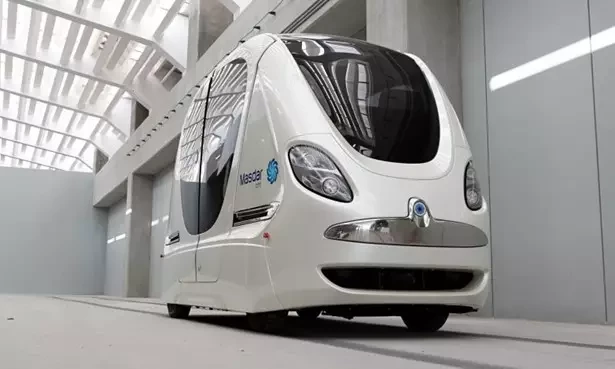
Masdar University was the first major cluster to be implemented within the city plan. It embodies Masdar’s principles and goals of creating a real and viable city - a prototype of a sustainable city that runs entirely on renewable solar energy. The buildings are powered by rooftop batteries. The same batteries power the hot water systems.
In the facade structures of some buildings, ETFE technologies are partially used. These are "blown" polymer materials created from ethylene and tetrafluoroethylene, obtained partly from recycled materials. Unlike glass structures, the transparent polymer film is light and transparent. A pneumatic cushion (ETFE cushion) is created from them, which is attached to the facade using lightweight aluminum profiles. These cushions are filled with air under low pressure, which provides them with thermal insulation and structural stability. ETFE facades remain cool to the touch under the scorching sun.
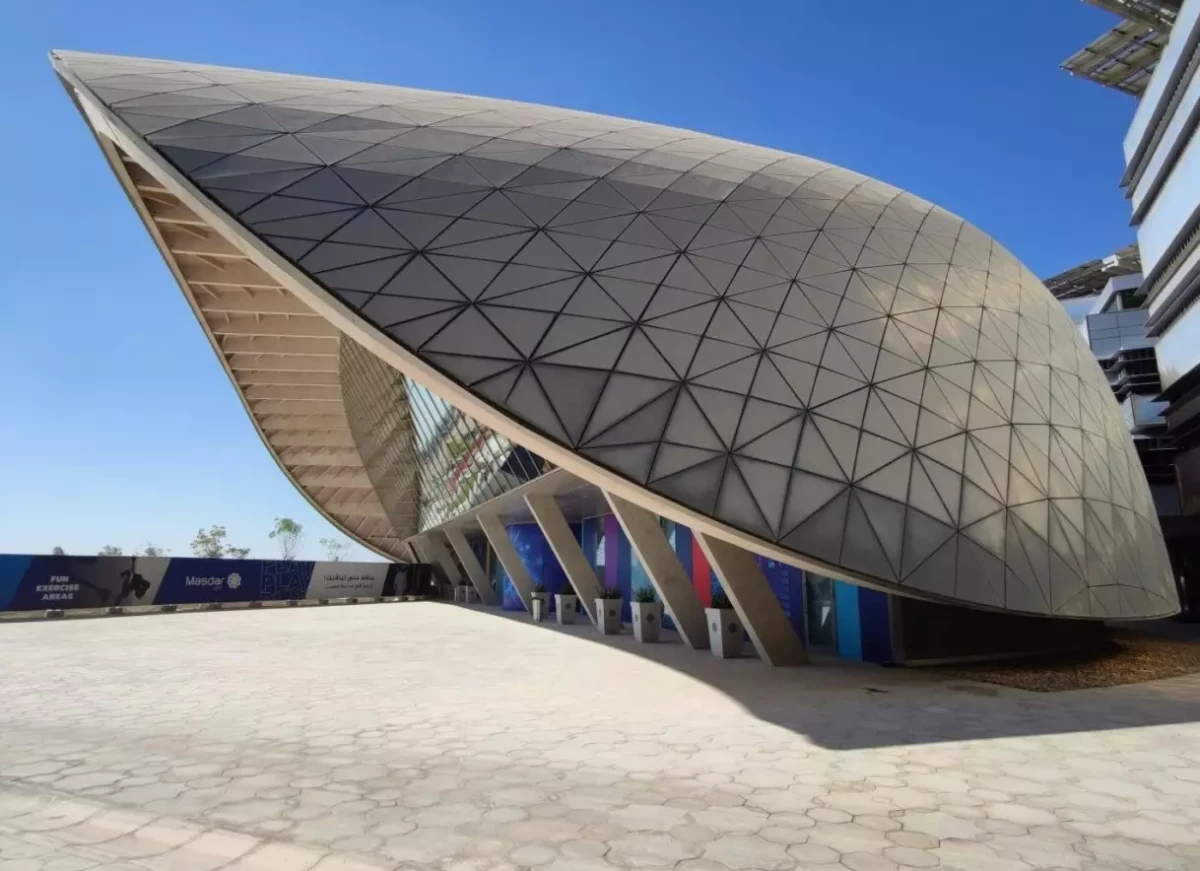
Masdar "lives" on its own autonomous energy sources. In addition to panels on the roofs of houses near the city, there are 87 solar panels on an area of 21 hectares.
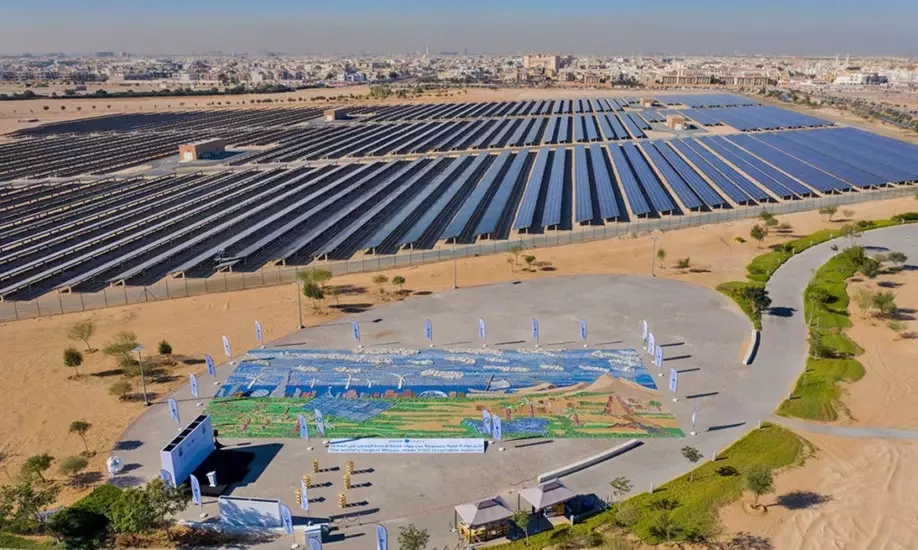
In office buildings, campus buildings and homes, electricity is turned on and off, and water is supplied to taps using motion sensors.
In addition to energy-saving measures, Masdar will aim to recycle and reuse around 80% of the water used in the city.
The zero carbon emissions of Masdar city has led to support from various global organizations such as WWF, BioRegional, GreenPeace, who are actively promoting the city as an official “one planet living community”. The city was awarded the 2012 EE Visionary Award by the Alliance to Save Energy.
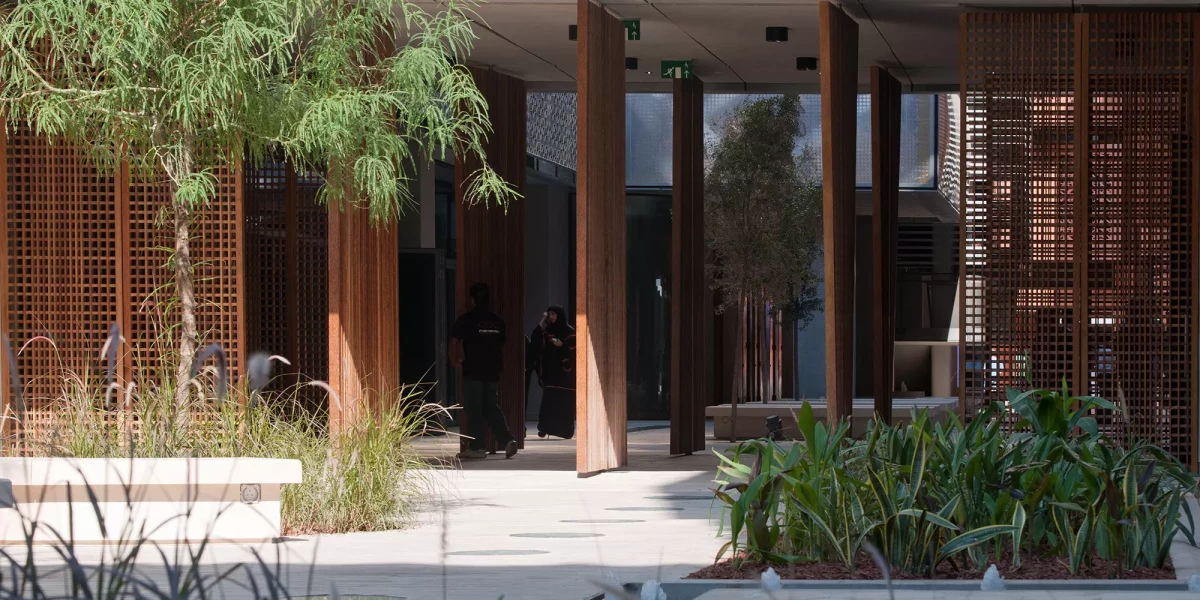
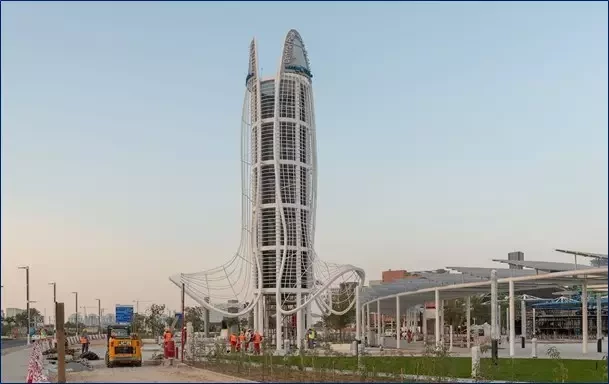
Initially, construction was planned to be completed in 2009, but was frozen until 2015. Today, construction of the city continues - in the 12 years that it has already been going on, 5% of the total territory has been built up. The completion date has been postponed to 2030.
Now, both designers and authorities and the public acknowledge that it will be impossible to completely achieve zero carbon footprint from the experimental city. It will not reach this goal even when it is fully built. “As of today, it is not a net zero future, but about 50%,” says Chris Wang, design manager for Masdar City.
It is hardly possible to create the Absolute today. But this is a huge step on the scale of humanity towards awareness, reduction and prevention of damage that cities of civilization cause to our beautiful and fragile planet.
The implementation of Masdar city continues.
The article was useful to you?
9
200
0